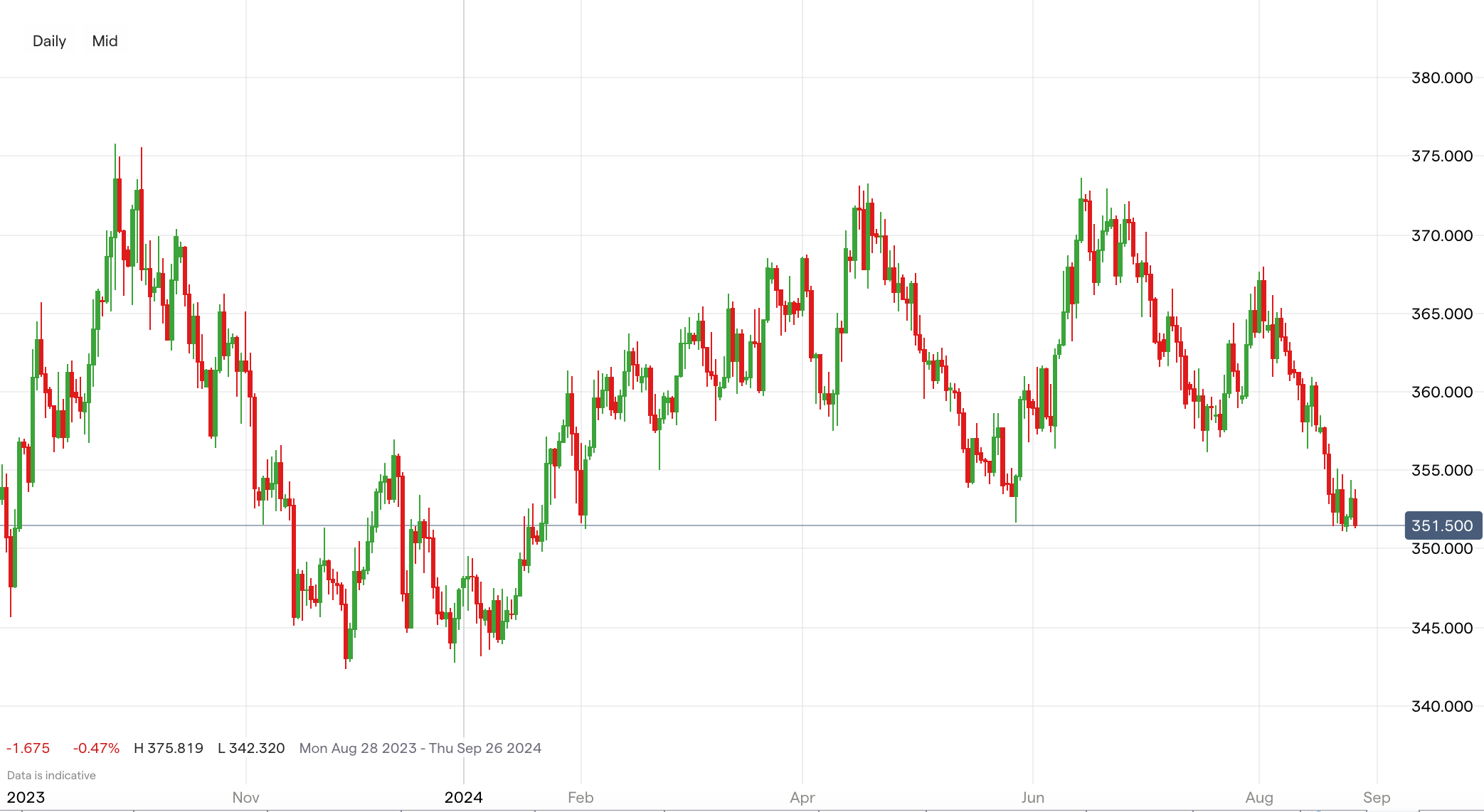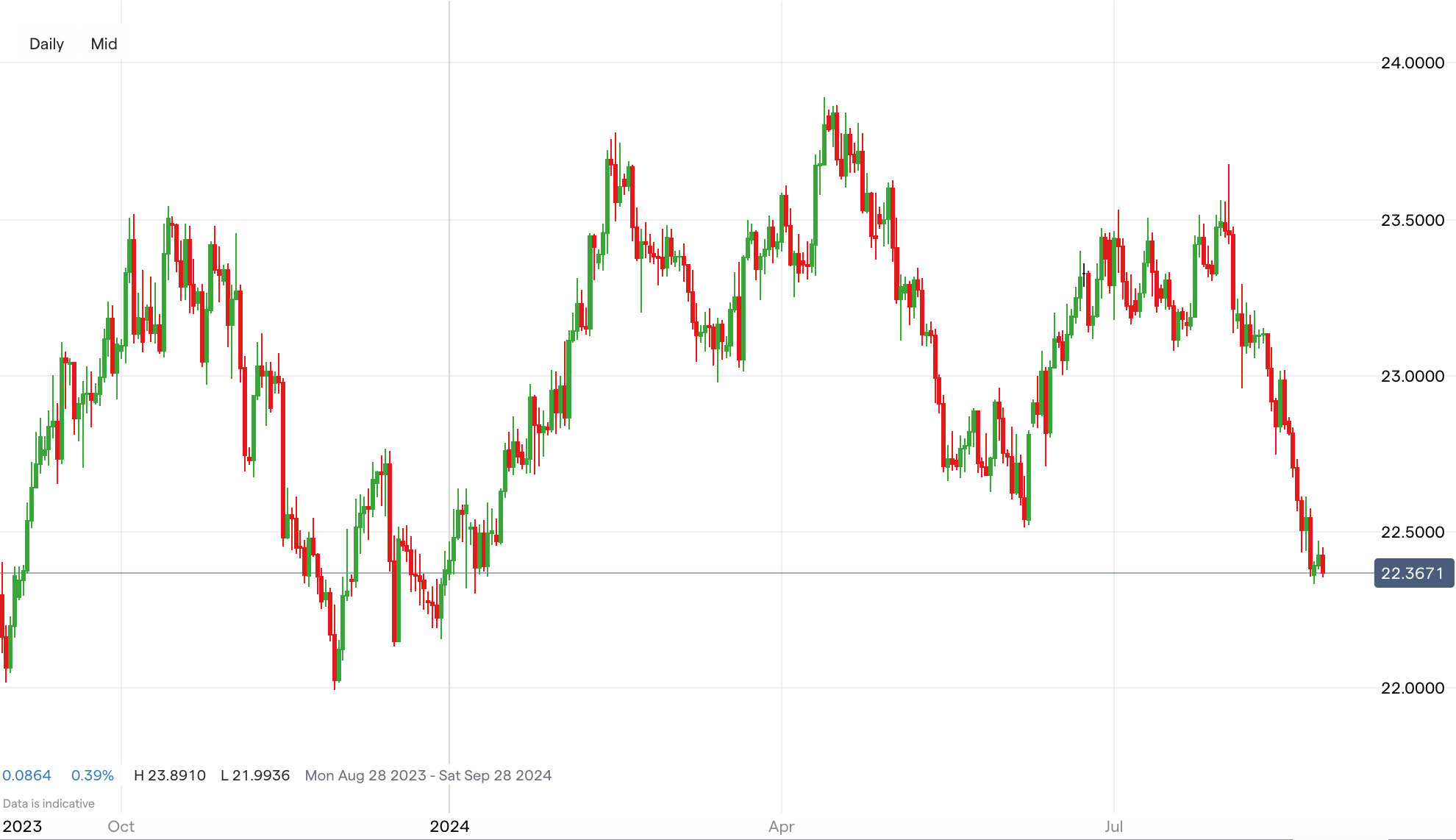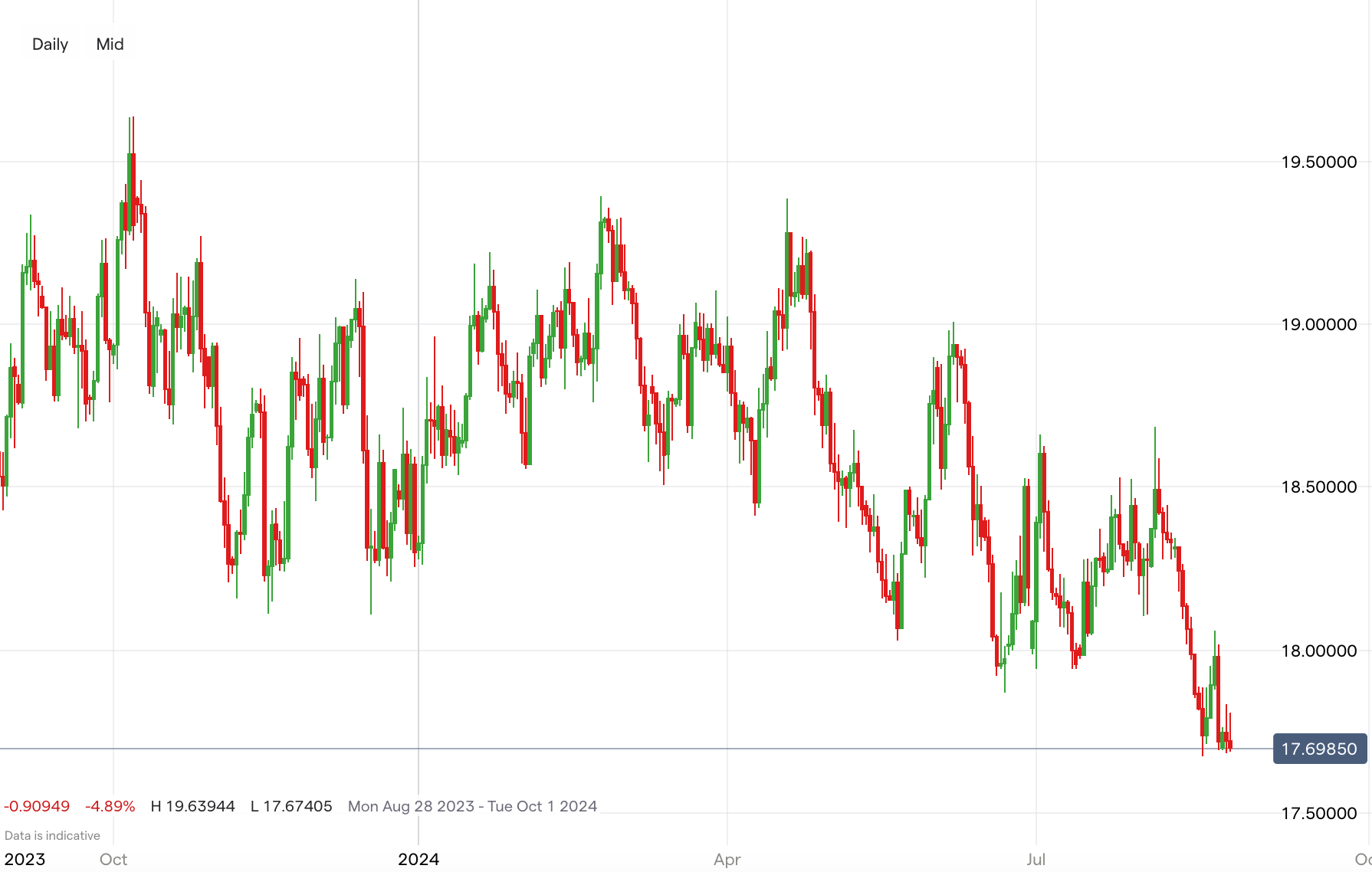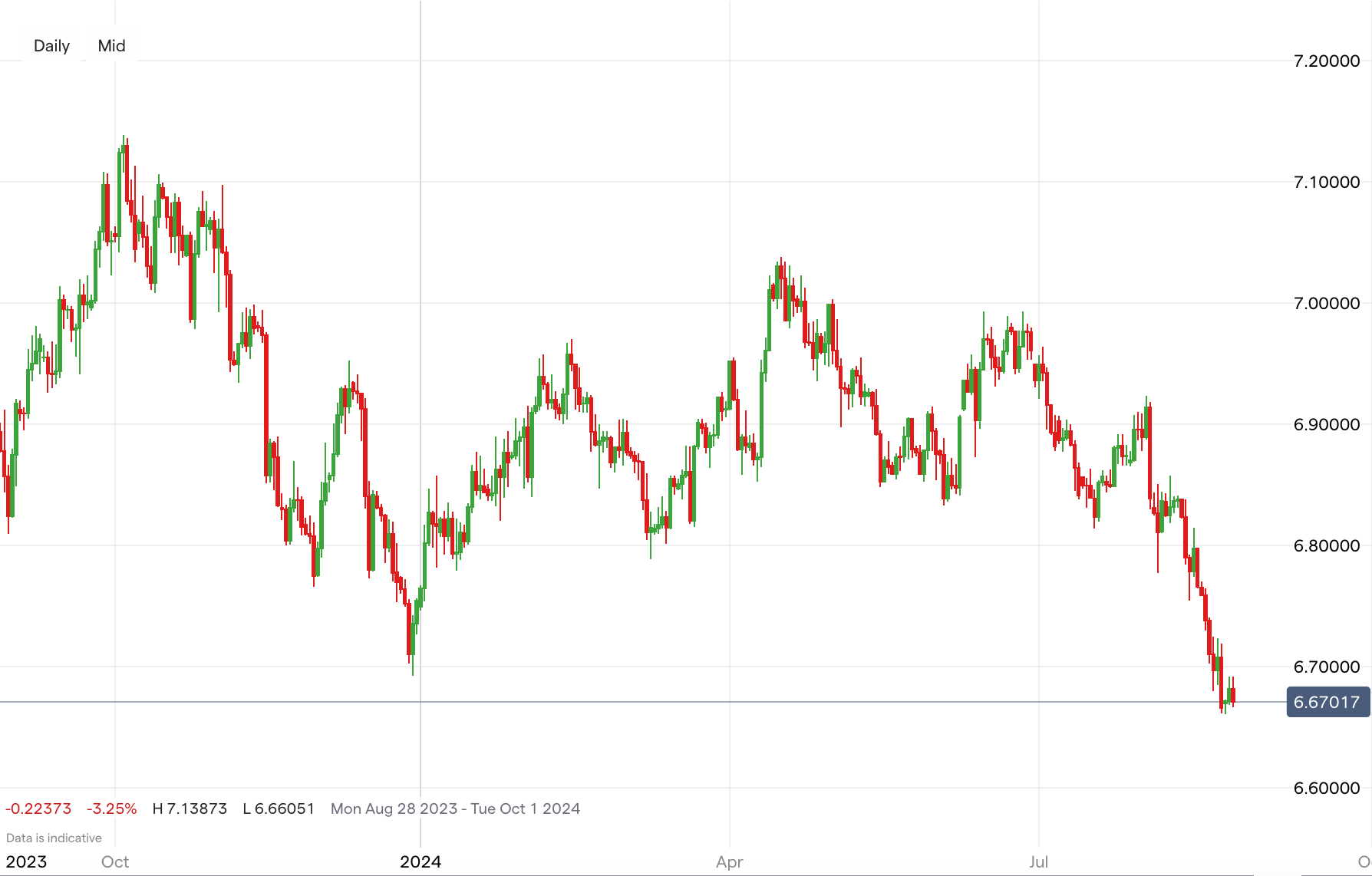Top 10 countries where the US dollar is the strongest
A strong US dollar increases purchasing power in forex trading and travel, allowing more foreign currency for each dollar. Discover where the US dollar is most valuable compared to 10 countries.

Places Where the US Dollar Goes the Furthest
Below is a list of currency pairs where the US dollar holds significant value, allowing you to get more for every dollar spent. These countries vary between Europe, Asia, and the Americas, allowing for a diverse portfolio. Their favorable exchange rates make these destinations attractive for forex traders seeking advantageous currency rates or travelers looking to stretch their budget. We will also explain why these exchange rates are so favorable to help you better understand your decisions, whether you are a trader or a traveler (or both!). By understanding these exchange rates, you can increase your spending power and make informed decisions whether you're trading forex or planning your next trip.
- Hungary
- Japan
- Turkey
- Czech Republic
- Mexico
- South Africa
- Norway
- Sweden
- Denmark
- China
10 Countries Where the US Dollar Goes the Furthest:
Here are ten offered currency pairs at tastyfx where the dollar dominates, as well as their corresponding official currencies. It is important to remember that many kinds of factors affect exchange rates, and that these pairs are subject to change based on environmental events and economic conditions.
1. Hungary (USD/HUF)

1 USD = 351.77 Hungarian forint
The US tends to have a more stable economy than Hungary, with diverse and robust financial markets. Hungary has a much smaller economy, so when political, economic, or external shocks occur, it is harder for them to bounce back. This makes the US dollar appear as a safer choice for forex traders.2. Japan (USD/JPY)

1 USD = 143.95 Japanese yen
The Federal Reserve has kept interest rates relatively high for the US dollar compared to Japan, thus attracting foreign investors looking for better returns. Additionally, the US holds a trade deficit, while Japan has a trade surplus, meaning Japan exports more than they import. Japan’s dependence on exports leaves it sensitive to global issues, making it easier for the yen to weaken compared to the dollar.3. Turkey (USD/TRY)

1 USD = 34.02 Turkish lira
Turkey has been experiencing high inflation rates, which decreases the value of the lira. Furthermore, the dollar is considered the world’s primary reserve currency and has a more prominent reputation in the world of forex trading, whereas Turkey has limited foreign exchange reserves and authority.4. Czech Republic (USD/CZK)

1 USD = 22.37 Czech koruna
Like Hungary, the Czech Republic has a smaller economy than the US, making it more sensitive to economic turmoil. The US dollar also experiences lower inflation rates than the Czech Republic and higher interest rates, making it more desirable to foreign investors.5. Mexico (USD/MXN)

1 USD = 19.71 Mexican peso
Mexico’s economy is heavily reliant on exports, such as oil, so fluctuations in global commodity prices can affect the value of the peso. Additionally, while Mexico has made progress in political and socioeconomic reforms, it still faces challenges with corruption and economic regulation uncertainty, which can drive away investors.6. South Africa (USD/ZAR)

1 USD = 17.70 South African rand
The United States attracts a higher level of foreign direct investments due to its size, diversity, stability, and advancements. While South Africa attracts foreign direct investments as well, it is on a smaller scale compared to the US. Their financial markets are also smaller and less liquid than the United States, making it a slightly less attractive option for foreign investors.7. Norway (USD/NOK)

1 USD = 10.46 Norwegian krone
Like Denmark, Norway does not have much influence on global markets, especially compared to the United States. Additionally, Norway’s economy is heavily reliant on the oil and gas sector, meaning when oil prices are low, the NOK typically weakens. While the US economy is also affected by oil prices, it has a diverse enough economy where these issues cause a less direct impact.8. Sweden (USD/SEK)

1 USD = 10.14 Swedish krona
Despite Sweden’s well-developed economy, it is still more vulnerable to fluctuations than the US economy. Also, Sweden’s central bank, the Riksbank, has lower interest rates than the US, making it less desirable to foreign investors seeking high returns.9. China (USD/CNH)

1 USD = 7.12 Chinese yuan
Like Japan, China also holds lower interest rates than the United States. Additionally, the US economy is perceived as more stable and resilient when compared to China’s economy. This extra stability in the US boosts investor confidence, in turn, contributing to the strength of the dollar relative to the yuan.
10. Denmark (USD/DKK)

1 USD = 6.67 Danish krone
Because of the United States’ stable political and economic environment, robust capital flows into it. Conversely, Denmark has a smaller scale of capital inflows, weakening its strength compared to the USD. Also, Denmark, along with other European countries, has limited control over its currency because of the European Central Bank and fixed exchange rate policies.While it is important to monitor ever-changing exchange rates, the US dollar has a strong tendency to hold a favorable rate against many other currencies. Keeping an eye on these rates can provide multiple advantages, including maximizing the value of your money, being well-prepared for fluctuations in the forex market, or enjoying a more affordable travel experience.
Maximize Your Forex and Travel Strategy: Important Factors to Consider
In the world of forex trading, a strong US dollar provides an opportunity to purchase more of another currency, potentially increasing your returns. For travelers, these favorable exchange rates mean you can experience more of the local culture, food, and activities without breaking the bank. For instance, traveling as an American tourist to Japan or Mexico with a strong US dollar means your money will go much further, allowing for more luxurious experiences at a fraction of the cost compared to traveling within the United States or other high-cost countries.
It's also wise to consider the economic stability, exports, interest rates, and inflation rates of these countries. For example, while Turkey offers a high exchange rate, the local economy's inflation could affect the overall value you receive. In contrast, countries with more stable economic conditions like Japan or South Korea offer both value and a generally reliable economic environment.
Additional Factors to Consider
In addition to the basic factors mentioned, several other elements play a crucial role in determining a strong dollar relative to other currencies:
- Geopolitical Stability: in the United States attracts investors seeking a safe environment for their investments. Conversely, geopolitical issues in countries like Turkey or South Africa can scare away investors, weakening their currencies. These reputations are built over years and can be altered with even a single event.
- Foreign Exchange Reserves: Countries with substantial foreign exchange reserves can better support their currencies during economic downturns. The US, with its significant reserves and its reputation as a reserve currency, can maintain the strength of the USD, whereas countries with limited reserves, such as Turkey or South Africa, may struggle.
- Market Liquidity: The depth and liquidity of the US financial markets attract global investors, increasing demand for the USD. Countries with smaller, less liquid markets may not attract the same level of investment, resulting in weaker currencies.
- Economic Diversification: A diversified economy like that of the US can withstand global economic shocks better than economies reliant on specific sectors. The US has multiple industries to fall back on, instead of one major one. Mexico's dependence on oil exports, for example, makes it vulnerable to fluctuations in oil prices, affecting the peso's value.
Conclusion
Understanding where the US dollar holds the most value can benefit both forex traders and those who want to have the best travel experiences for their buck. By staying informed and strategically planning your trades or travels, you can optimize your financial outcomes. Whether you're looking to invest in the forex market or explore bucket list travel destinations, a strong US dollar can offer significant advantages. By integrating keywords related to forex trading, exchange rates, and travel, the content is optimized for search engines while maintaining a natural and informative flow for readers.
How to trade US dollar
- Open an account to get started, or practice on a demo account
- Choose your forex trading platform
- Open, monitor, and close positions on USD pairs
Trading forex requires an account with a forex provider like tastyfx. Many traders also watch major forex pairs like EUR/USD and USD/JPY for potential opportunities based on economic events such as inflation releases or interest rate decisions. Economic events can produce more volatility for forex pairs, which can mean greater potential profits and losses as risks can increase at these times.
You can help develop your forex trading strategies using resources like tastyfx’s YouTube channel. Our curated playlists can help you stay up to date on current markets and understanding key terms. Once your strategy is developed, you can follow the above steps to opening an account and getting started trading forex.
Your profit or loss is calculated according to your full position size. Leverage will magnify both your profits and losses. It’s important to manage your risks carefully as losses can exceed your deposit. Ensure you understand the risks and benefits associated with trading leveraged products before you start trading with them. Trade using money you’re comfortable losing.
